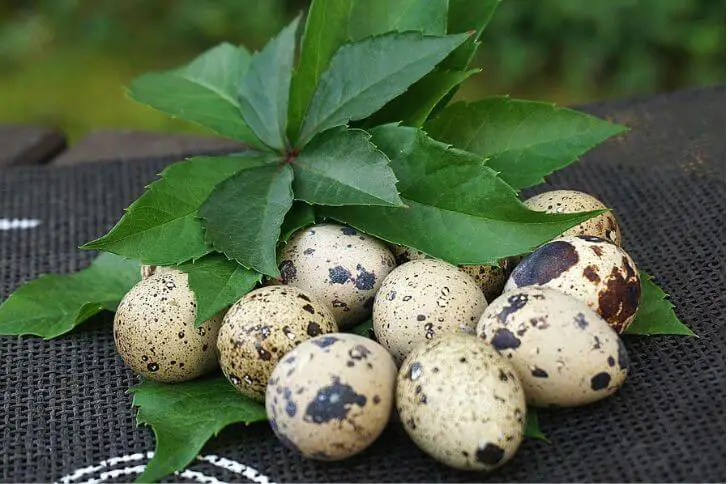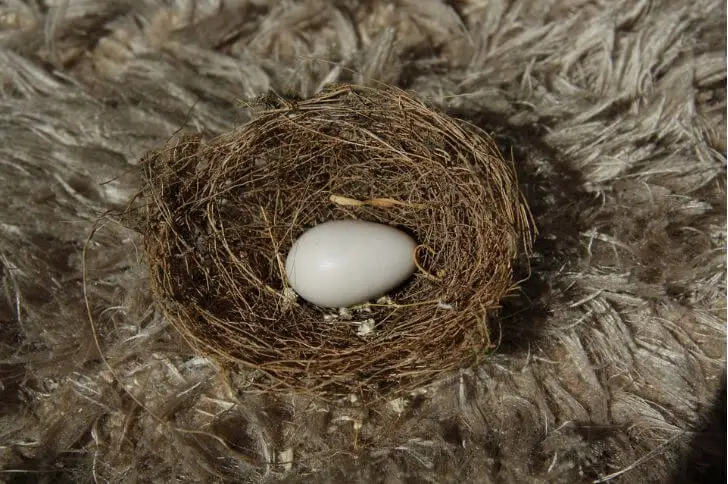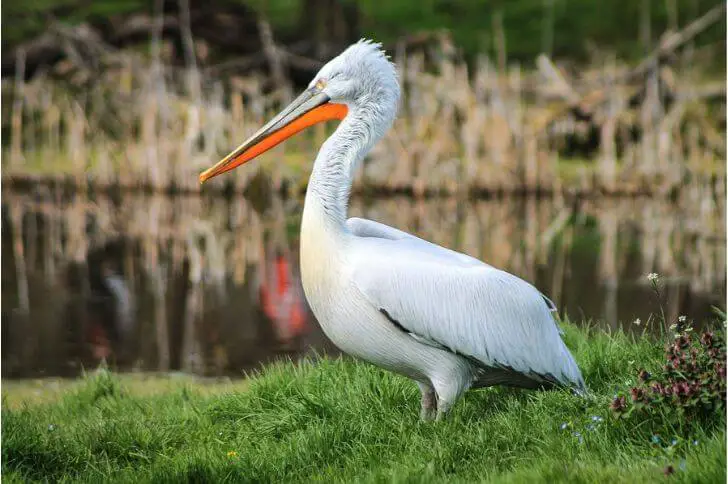Hairy woodpeckers are one of the many types of woodpeckers that make their homes in North America. Can you identify the adults or juvenile hairy woodpeckers?
The adult is a medium-sized bird, about 7.1-10.2 inches long, whose main plumage is black and white. Males have a small red patch on their heads, females don’t have one. This small patch will help you tell male hairy woodpeckers from males. Notice the long, strong bill.
The hairy woodpecker favors deciduous forest all over North America. They hardly migrate but birds in colder areas will move South during winter. Also, this woodpecker is mostly insectivorous and is commonly seen scaling tree trunks in search of food.
What month do hairy woodpeckers lay eggs?
Hairy woodpeckers are one of the few bird species that lay their eggs in the spring months. These birds’ breeding season is from April to May and may last up to July depending on availability of food in that season.
Do hairy woodpeckers have a mating ritual? Yes. During nesting season you’ll notice breeding couples pointing their bills up while stretching their necks. They’ll also flick their wings and move their round heads from side to side.
The female hairy woodpecker raises only one brood per season and will lay 3-5 1-inch eggs in a nest that she has excavated in a tree. Incubation lasts for 12-14 days.
What does a juvenile hairy woodpecker look like?
1st Week: After hatching, the babies are red and naked. They are blind and very clumsy. Their feet are pink.
2nd Week: Black and white down grow. They are still blind and depend on their parents for food.
3rd Week: Eyes open, feet turn gray. Most of the juvenile feathers have grown, covering its body.
4th Week: Like most woodpecker babies, the juvenile hairy woodpecker is duller than its parents. The main reason for this plumage is to hide them from predators. A hairy woodpecker fledgling has a gray belly with brownish-black feathers on its back. Their bill and feet are dark gray. Note, the red patch on males head has already developed.
How big are hairy woodpecker chicks?
When it comes to woodpecker chicks, size does matter—hairy woodpecker chicks are some of the biggest around. Measuring in at about 5-7 inches long and weighing in at nearly an ounce, these little ones are almost twice the size of an adult black-capped chickadee.
And while they’re not the biggest woodpecker chicks out there—that honor goes to the ivory-billed woodpecker—they’re still pretty darn big. So how do they get so big? Well, it’s all thanks to their diet. These chicks feast on a steady diet of insects, which helps them pack on the pounds quickly. So next time you see a hairy woodpecker fledgling, take a moment to appreciate just how big and strong these little ones have to be to survive in the wild.
How can you tell if a juvenile hairy woodpecker is male or female?
To the untrained eye, it can be difficult to tell the difference between a male and female juvenile hairy woodpecker. However, there is one subtle physical cue that can help you determine the gender of these little birds.
Male juvenile hairy woodpeckers have a red patch on their forehead while females are without one. The rest of their bodies are similar in plumage and size.
If you’re still not sure how to tell a male from a female juvenile hairy woodpecker, you can always wait until they mature and develop more obvious physical traits. Adult males usually have bright red patches on their heads, while adult females usually don’t.
What do juvenile hairy woodpeckers eat?
A juvenile hairy woodpecker’s diet consists mainly of insects. During the first 3 weeks of their lives, their dad does the bulk of the feeding, flying long distances in search of insects. Their mom also feeds them with insects she can glean from the areas close to the nest.
After the fourth week, most fledglings will learn from their parents how to find their own food. Their diet now consists of spiders, caterpillars, bees, beetles, seeds and berries. If you have an orchard, this medium-sized bird would be of great help to your fruit trees.
How long does it take a fledgling hairy woodpecker to fly?
A fledgling hairy woodpecker is able to fly within 4-6 weeks after it hatches from its egg. The young bird will spend most of its time in the nest during this time period, slowly gaining the strength and coordination necessary for flight.
Once it is ready to fly, the fledgling will leave the nest and begin to explore its surroundings. At first, it will only be able to fly short distances, but as it continues to practice and build up its muscles, it will be able to stay in the air for longer periods of time.
When do juvenile hairy woodpeckers molt?
Molting is when a young bird sheds its feathers and grows new adult feathers. Most birds do this once a year, but some, like the juvenile hairy woodpecker, may molt more than once.
The timing of a molt is important for a bird’s survival. A new set of feathers means the bird can fly again and escape predators. It also means the bird can find food and mate.
For the juvenile hairy woodpecker, molting usually happens after about 6 weeks after hatching. This is when the young birds are ready to leave their nest and start their own lives. They also develop stiff tail feathers that provide support when digging out nests or looking for insects in crevices.
How long do before baby hairy woodpeckers leave the nest?
After a baby hairy woodpecker hatches, it will stay in the nest for approximately 28-30 days. During this time, the parents will take turns feeding the baby and protecting it from predators. Once it is ready to leave the nest, the parents will encourage it to do so by flying away from the nest themselves.
What do you feed a hairy woodpecker fledgling?
A hairy woodpecker fledgling has very specific dietary needs. In the wild, they would eat mostly insects, but in captivity, you will need to provide them with a diet that consists of 80% protein and 20% fat. You can give them a variety of insects, such as mealworms, and waxworms. You can also provide them with a commercially prepared diet that is specifically designed for young birds. Make sure to provide them with fresh water at all times.
Where do hairy woodpeckers sleep at night?
But where do these creatures go at night? It turns out that hairy woodpeckers roost in tree cavities, just like many other types of birds. Cavities provide them with protection from the elements and predators. Plus, it gives them a place to rest their weary heads after a long day of pecking!
Do hairy woodpeckers migrate
The short answer is no, hairy woodpeckers do not migrate. These birds are permanent residents, meaning they stick to the same general area throughout the year. Even though they don’t migrate, hairy woodpeckers may move around a bit within their range depending on food availability.
So why don’t these birds migrate? Hairy woodpeckers are well-adapted to North American winters. They have thick feathers and can fluff them up to create extra insulation. Their feet are also covered in scales, which helps protect them from the cold weather.
However it’s worth noting, woodpeckers in the colder north may move to the South where its warmer and with more food.
What do you do if you find a juvenile hairy woodpecker
If you find a juvenile hairy woodpecker, the best thing to do is leave it alone. If the bird does seem to be hurt, you can gently pick it up and put it in a box or cage. Make sure to put some holes in the top of the box so the bird can breathe. Take the bird to your local wildlife rehabilitation center as soon as possible.
How do you care for a hairy woodpecker fledgling?
If you find a hairy woodpecker fledgling, the best thing to do is to leave it where you found it. The parents are usually close by and will take care of the baby bird. However, if you are concerned that the parents are not around or that the baby bird is in danger, you can place it in a small box or container lined with soft material such as cloth or paper towels.
Make sure to keep the container in a warm place away from direct sunlight or drafts. About feeding it, check above to get the right food for it.
Do hairy woodpeckers damage trees ?
While hairy woodpeckers do not typically kill trees, their drilling can cause long-term damage that makes the tree more susceptible to disease and insect infestation. In some cases, the holes left by these birds can even weaken the structure of the tree, making it more likely to fall over in strong winds.
If you have a hairy woodpecker problem on your property, there are a few things you can do to discourage them from drilling into your trees. You can try hanging birdhouses for nesting boxes in other areas of your yard to give them a different place to drill.
What eats hairy woodpeckers?
Natural predators of hairy woodpeckers include:
- Foxes
- Snakes
- Falcons
- Eagles
- Bobcats
Sources:
https://en.wikipedia.org/wiki/Hairy_woodpecker
Hi, my name is Steve. My friend and I started the spanishbirdguides.com to share our passion with other like-minded people. So, if bird watching is your thing, you’ll love this blog. I’ll share what I’ve learnt about both local birds and those found in other parts of the world. Also, I’d love to hear your experiences.



